
 Published in 2020 by The Rosen Publishing Group, Inc. 29 East 21st Street, New York, NY 10010 Cataloging-in-Publication Data Names: Amson-Bradshaw, Georgia. Title: Materials / Georgia Amson-Bradshaw. Description: New York: PowerKids Press, 2020. | Series: Boom science | Includes glossary and index. Identifiers: ISBN 9781725303775 (pbk.) | ISBN 9781725303799 (library bound) | ISBN 9781725303782 (6pack) Subjects: LCSH: Materials--Juvenile literature.
Published in 2020 by The Rosen Publishing Group, Inc. 29 East 21st Street, New York, NY 10010 Cataloging-in-Publication Data Names: Amson-Bradshaw, Georgia. Title: Materials / Georgia Amson-Bradshaw. Description: New York: PowerKids Press, 2020. | Series: Boom science | Includes glossary and index. Identifiers: ISBN 9781725303775 (pbk.) | ISBN 9781725303799 (library bound) | ISBN 9781725303782 (6pack) Subjects: LCSH: Materials--Juvenile literature.
Classification: LCC TA403.2 A56 2020 | DDC 620--dc23 Copyright 2020 Wayland, a division of Hachette Childrens Group Series Editor: Georgia Amson-Bradshaw Series Designer: Rocket Design (East Anglia) Ltd Picture acknowledgements: Shutterstock: Matyas Rehak t Illustrations by Steve Evans 12, 13, 18, 19, 26, 27 All design elements from Shutterstock. All rights reserved. No part of this book may be reproduced in any form without permission in writing from the publisher, except by a reviewer. Manufactured in the United States of America CPSIA Compliance Information: Batch CSPK19: For Further Information contact Rosen Publishing, New York, New York at 1-800-237-9932.  CONTENTS
CONTENTS  MATERIALS We make things from materials. WOW! In Uyuni in Bolivia, some buildings are made of salt! There is so much salt in Uyuni that blocks of it can be cut from the ground and used as bricks.
MATERIALS We make things from materials. WOW! In Uyuni in Bolivia, some buildings are made of salt! There is so much salt in Uyuni that blocks of it can be cut from the ground and used as bricks. 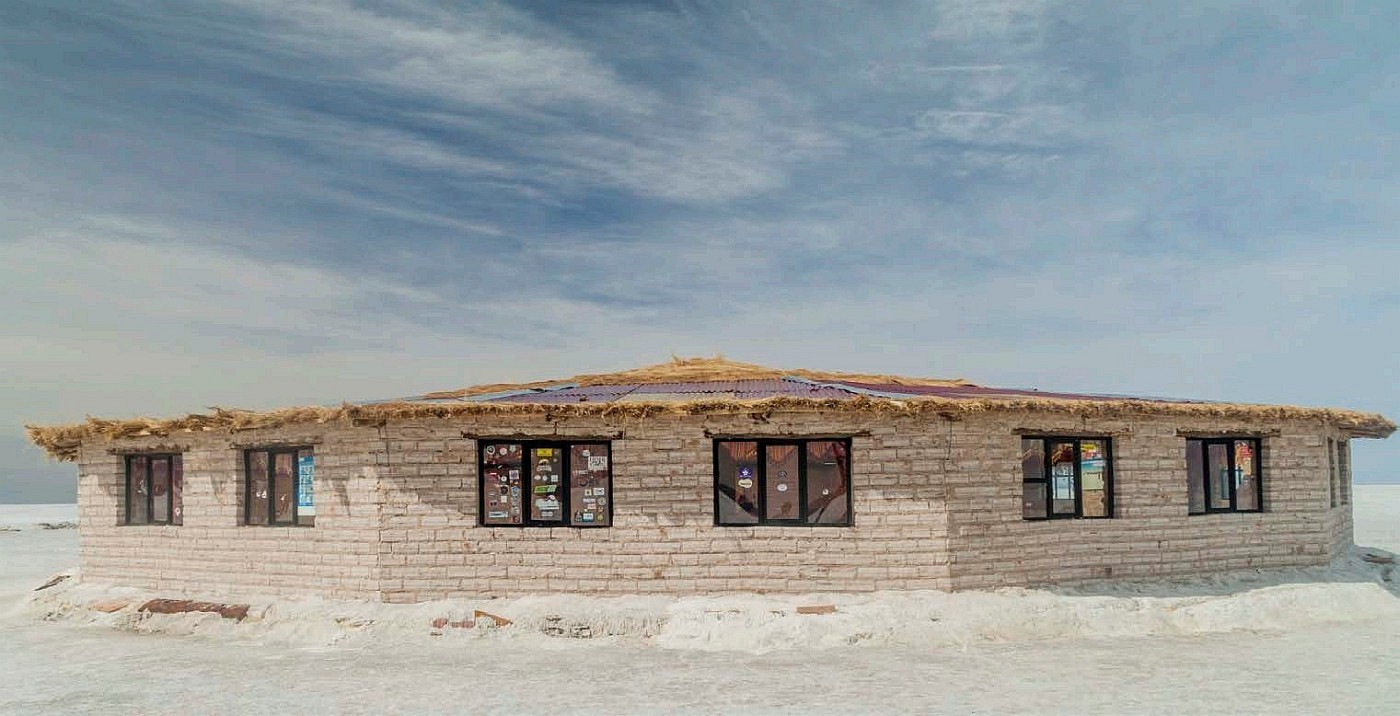 HOW MANY MATERIALS? Objects can be made of lots of materials, or just one.
HOW MANY MATERIALS? Objects can be made of lots of materials, or just one.  HOW MANY MATERIALS? Objects can be made of lots of materials, or just one.
HOW MANY MATERIALS? Objects can be made of lots of materials, or just one.
A drinking glass is just made of one material: and plastic.  HEY, WHAT AM I? Look at these objects. Can you say both the names of the objects AND the materials the objects are made of?
HEY, WHAT AM I? Look at these objects. Can you say both the names of the objects AND the materials the objects are made of?  USING MATERIALSSome materials have many uses.MULTIPURPOSE Some materials are very useful, because they can do lots of different jobs. In this picture, the shed and the garden furniture are made of . The sheds windows and the bottle are made of glass.
USING MATERIALSSome materials have many uses.MULTIPURPOSE Some materials are very useful, because they can do lots of different jobs. In this picture, the shed and the garden furniture are made of . The sheds windows and the bottle are made of glass.  OPTIONS FOR OBJECTS The same object can be made of different materials, too.
OPTIONS FOR OBJECTS The same object can be made of different materials, too.  OPTIONS FOR OBJECTS The same object can be made of different materials, too.
OPTIONS FOR OBJECTS The same object can be made of different materials, too.
For example, drinking cups can be made from plastic, , or metal.  HIDE AND SEEK Can you spot something people wear on their feet that is made of rubber?
HIDE AND SEEK Can you spot something people wear on their feet that is made of rubber?  PROPERTIES A material can be described by its properties .HARD, SOFT, ROUGH, SMOOTH Different materials have different .
PROPERTIES A material can be described by its properties .HARD, SOFT, ROUGH, SMOOTH Different materials have different .  UP TO THE JOB When making objects, we use materials that have the best properties for the job. A house needs to be built from strong, , and waterproof materials. Our clothes need to be made from soft, flexible materials.
UP TO THE JOB When making objects, we use materials that have the best properties for the job. A house needs to be built from strong, , and waterproof materials. Our clothes need to be made from soft, flexible materials. 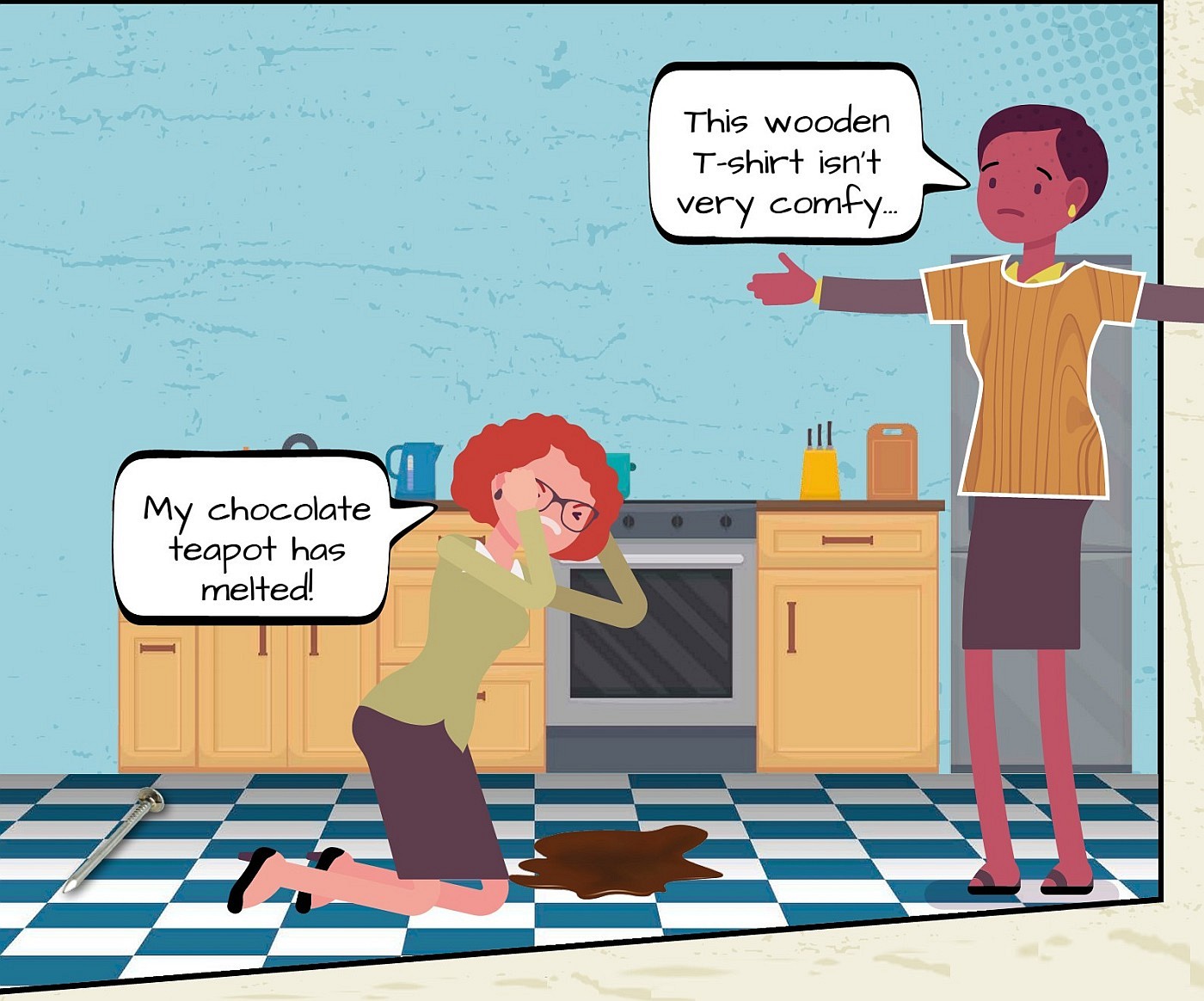 HIDE AND SEEK A nail is a small object made of hard metal.
HIDE AND SEEK A nail is a small object made of hard metal.
Can you spot one hiding? HEY, WHAT AM I? Can you recognize this rough, hard material? Answer on page 28.  YOUR TURN !WATER PROOF MATERIALSFind out which materials let water pass through, and which dont. Youll need:
YOUR TURN !WATER PROOF MATERIALSFind out which materials let water pass through, and which dont. Youll need: STEP ONE Cover the tops of the cups with the materials. Secure the materials in place with a rubber band around the rims. Make sure there are no gaps around the edges.
STEP ONE Cover the tops of the cups with the materials. Secure the materials in place with a rubber band around the rims. Make sure there are no gaps around the edges.  STEP TWO Place the cups onto the tray.
STEP TWO Place the cups onto the tray.
Slowly pour about 3 ounces (90 ml) of water onto the top of each covered cup. Pour the same amount of water onto each. 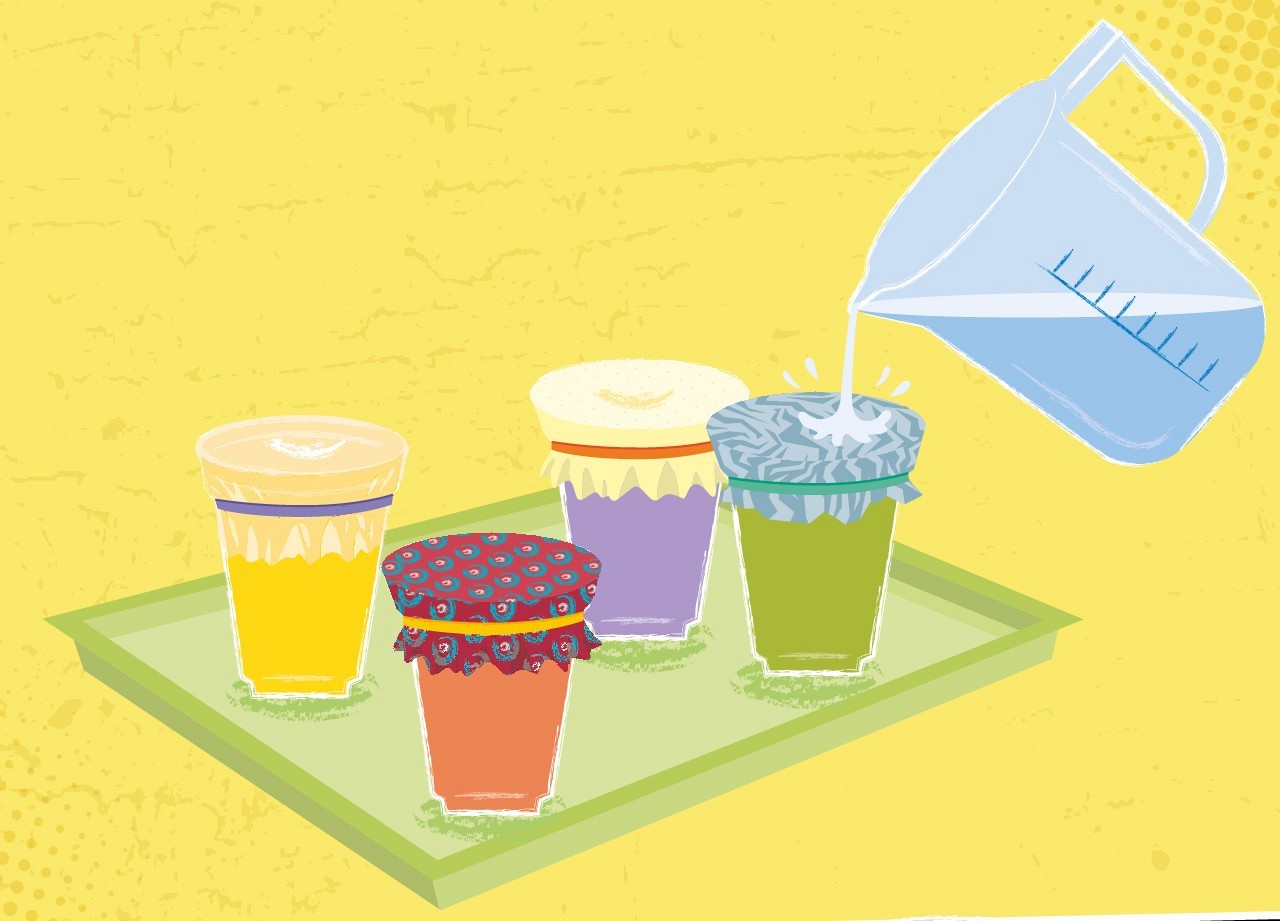 STEP THREE Watch what happens to the water. Does it run off or soak through? Remove the rubber bands and the materials and look inside the cups. Which materials let the water through?
STEP THREE Watch what happens to the water. Does it run off or soak through? Remove the rubber bands and the materials and look inside the cups. Which materials let the water through?  NATURAL MATERIALS Some materials come from plants, animals, or the ground
NATURAL MATERIALS Some materials come from plants, animals, or the ground MATERIALS THAT GROW A lot of the materials we use come from plants. Wood comes from trees.
MATERIALS THAT GROW A lot of the materials we use come from plants. Wood comes from trees.
Straw is dried stalks of grass and it can be woven to make hats, or used as a building material. WARM WOOL, SMOOTH SILK Animals provide us with materials, too. Sheep have woolly coats that we shear and use to make woollen sweaters and blankets. Silk comes from the of a type of moth.  STONES AND GEMS
STONES AND GEMS Stones can be polished to make jewelry. The ground is another place natural materials come from. WOW! A spiderweb is a superstrong natural material. WOW! A spiderweb is a superstrong natural material.
Stones can be polished to make jewelry. The ground is another place natural materials come from. WOW! A spiderweb is a superstrong natural material. WOW! A spiderweb is a superstrong natural material.
It is stronger than is at the same thickness. 
Next page
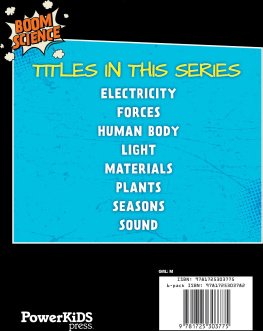



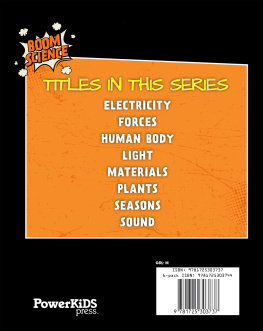
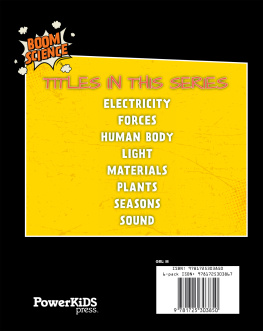






 Published in 2020 by The Rosen Publishing Group, Inc. 29 East 21st Street, New York, NY 10010 Cataloging-in-Publication Data Names: Amson-Bradshaw, Georgia. Title: Materials / Georgia Amson-Bradshaw. Description: New York: PowerKids Press, 2020. | Series: Boom science | Includes glossary and index. Identifiers: ISBN 9781725303775 (pbk.) | ISBN 9781725303799 (library bound) | ISBN 9781725303782 (6pack) Subjects: LCSH: Materials--Juvenile literature.
Published in 2020 by The Rosen Publishing Group, Inc. 29 East 21st Street, New York, NY 10010 Cataloging-in-Publication Data Names: Amson-Bradshaw, Georgia. Title: Materials / Georgia Amson-Bradshaw. Description: New York: PowerKids Press, 2020. | Series: Boom science | Includes glossary and index. Identifiers: ISBN 9781725303775 (pbk.) | ISBN 9781725303799 (library bound) | ISBN 9781725303782 (6pack) Subjects: LCSH: Materials--Juvenile literature. CONTENTS
CONTENTS  MATERIALS We make things from materials. WOW! In Uyuni in Bolivia, some buildings are made of salt! There is so much salt in Uyuni that blocks of it can be cut from the ground and used as bricks.
MATERIALS We make things from materials. WOW! In Uyuni in Bolivia, some buildings are made of salt! There is so much salt in Uyuni that blocks of it can be cut from the ground and used as bricks.  HOW MANY MATERIALS? Objects can be made of lots of materials, or just one.
HOW MANY MATERIALS? Objects can be made of lots of materials, or just one.  HEY, WHAT AM I? Look at these objects. Can you say both the names of the objects AND the materials the objects are made of?
HEY, WHAT AM I? Look at these objects. Can you say both the names of the objects AND the materials the objects are made of?  USING MATERIALSSome materials have many uses.MULTIPURPOSE Some materials are very useful, because they can do lots of different jobs. In this picture, the shed and the garden furniture are made of . The sheds windows and the bottle are made of glass.
USING MATERIALSSome materials have many uses.MULTIPURPOSE Some materials are very useful, because they can do lots of different jobs. In this picture, the shed and the garden furniture are made of . The sheds windows and the bottle are made of glass.  OPTIONS FOR OBJECTS The same object can be made of different materials, too.
OPTIONS FOR OBJECTS The same object can be made of different materials, too.  HIDE AND SEEK Can you spot something people wear on their feet that is made of rubber?
HIDE AND SEEK Can you spot something people wear on their feet that is made of rubber?  PROPERTIES A material can be described by its properties .HARD, SOFT, ROUGH, SMOOTH Different materials have different .
PROPERTIES A material can be described by its properties .HARD, SOFT, ROUGH, SMOOTH Different materials have different .  UP TO THE JOB When making objects, we use materials that have the best properties for the job. A house needs to be built from strong, , and waterproof materials. Our clothes need to be made from soft, flexible materials.
UP TO THE JOB When making objects, we use materials that have the best properties for the job. A house needs to be built from strong, , and waterproof materials. Our clothes need to be made from soft, flexible materials.  HIDE AND SEEK A nail is a small object made of hard metal.
HIDE AND SEEK A nail is a small object made of hard metal. YOUR TURN !WATER PROOF MATERIALSFind out which materials let water pass through, and which dont. Youll need:
YOUR TURN !WATER PROOF MATERIALSFind out which materials let water pass through, and which dont. Youll need: STEP ONE Cover the tops of the cups with the materials. Secure the materials in place with a rubber band around the rims. Make sure there are no gaps around the edges.
STEP ONE Cover the tops of the cups with the materials. Secure the materials in place with a rubber band around the rims. Make sure there are no gaps around the edges.  STEP TWO Place the cups onto the tray.
STEP TWO Place the cups onto the tray. STEP THREE Watch what happens to the water. Does it run off or soak through? Remove the rubber bands and the materials and look inside the cups. Which materials let the water through?
STEP THREE Watch what happens to the water. Does it run off or soak through? Remove the rubber bands and the materials and look inside the cups. Which materials let the water through?  NATURAL MATERIALS Some materials come from plants, animals, or the ground
NATURAL MATERIALS Some materials come from plants, animals, or the ground MATERIALS THAT GROW A lot of the materials we use come from plants. Wood comes from trees.
MATERIALS THAT GROW A lot of the materials we use come from plants. Wood comes from trees. STONES AND GEMS
STONES AND GEMS Stones can be polished to make jewelry. The ground is another place natural materials come from. WOW! A spiderweb is a superstrong natural material. WOW! A spiderweb is a superstrong natural material.
Stones can be polished to make jewelry. The ground is another place natural materials come from. WOW! A spiderweb is a superstrong natural material. WOW! A spiderweb is a superstrong natural material.